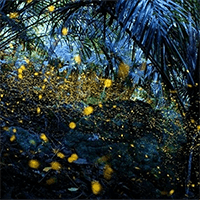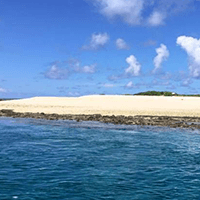- Age 6~Age 75
- Within 1 hour
- 10:00 / 11:00 / 12:00 / 13:00 / 14:00 / 15:00 / 16:00 / 17:00 / 18:00 / 19:00
The calligraphy of death is something that a samurai writes down with a brush as his last words in this world when he foresees his death. (Death refers to leaving this world) Customers can write their favorite kanji. You can select a character (kanji) and write it with an extra-large brush on SAMURAI paper (16 times the size of normal hanshi), which is made by combining two sheets of hanshi paper that is 8 times the size of normal hanshi paper. (Example) Yukimura Sanada's death note, ``If you go to live in an indefinite floating world, you will not know what will happen one day later.'' (In such an unstable world, we do not know what will happen tomorrow. Please think of Naniwa as something that doesn't exist in this world.'' Toyotomi Hideyoshi's deathbed writings, ``The dew falls, the dew falls and disappears.'' I wonder if Naniwa is also a dream within a dream (I became a citizen, but the dew fell and disappeared.) It was a life that seemed to disappear.)
- Age 6~Age 70
- 2~3 hours
- 11:00 / 14:00 / 17:00 / 20:00
Let's learn the bushido and experience the samurai spirit.What is the most important thing for a samurai? Wearing hakama, sandals, and a sword, and learning etiquette, manners, and kata. We call it the BUSHIDO sign.Next, as a BUSHIDO LEARN, you will experience the weight and sharpness of a real Japanese sword. We will learn the basics of swordsmanship (Battou and Nattou).We will take a break with SAMURAI TEA on the way. You will be entertained at a tea ceremony, as samurai risked their lives to "entertain" and "be entertained".Before participating in the final battle of the Warring States Period, the Battle of Osaka, the participants are asked to prepare for death and reflect on their own lives, writing their last words with a large brush on every piece of paper. This is called Deathbed calligraphy.At last, he puts on his armor and helmet to become a bushido master and goes to battle at the castle of Osaka to gain military merit in the battle of Osaka. However, when the defeat was imminent, the samurai, for the sake of honor, would not suffer the shame of the noose, even if they lost the battle, but would die by harakiri or cutting their belly before being captured.
- Age 6~Age 70
- 1~2 hours
- 11:00 / 14:00 / 17:00 / 20:00
Osaka no Jin ⚔ Pilgrimage to sacred places refers to the stages of battles such as the 1614 (Keicho 19) battle "Osaka Winter Jin" and the 1615 (Genna 1) restarted battle "Osaka Summer Jin" and other battles. It is to visit places connected to Osaka Castle as sacred places with “SAMURAI STYLE”. In addition, the term ``Japan's best soldier, who acted with great courage and speed'' in that battle was a name used to praise Sanada Nobushige (Yukimura), who was loyal to his lord, did not betray him even with money or territory, and was close to Tokugawa Ieyasu during the Summer Siege in Osaka. . Yukimura Sanada shined dazzlingly as a Sengoku military commander in the battle that concluded the Sengoku period. His vivid life still fascinates many people today, and let's make a pilgrimage to the sacred place of his glorious battle at Osaka, where he was praised as ``the greatest soldier in Japan.''
- Age 6~Age 70
- 1~2 hours
- 11:00 / 14:00 / 17:00 / 20:00
Osaka no Jin ⚔ Pilgrimage to sacred places refers to the stages of battles such as the 1614 (Keicho 19) battle "Osaka Winter Jin" and the 1615 (Genna 1) restarted battle "Osaka Summer Jin" and other battles. It is to visit places connected to Osaka Castle as sacred places with “SAMURAI STYLE”. In addition, the term ``Japan's best soldier, who acted with great courage and speed'' in that battle was a name used to praise Sanada Nobushige (Yukimura), who was loyal to his lord, did not betray him even with money or territory, and was close to Tokugawa Ieyasu during the Summer Siege in Osaka. . Yukimura Sanada shined dazzlingly as a Sengoku military commander in the battle that concluded the Sengoku period. His vivid life still fascinates many people today, and let's make a pilgrimage to the sacred place of his glorious battle at Osaka, where he was praised as ``the greatest soldier in Japan.''
- Age 6~Age 70
- 1~2 hours
- 11:00 / 14:00 / 17:00 / 20:00
This is a plan to commemorate and make a pilgrimage to the sad sacred place where SAMURAI and his friends were defeated in the Osaka Siege in the last war and fell to the castle, wearing armor and helmets reminiscent of the battle. ~ A famous castle that records the history of prosperity and turmoil of the people of Japan ~ This is how Osaka Castle is introduced on its official website. However, there was no trace of Osaka Castle, which boasted of being impregnable, as all of the moats other than the main castle and the moat that had been dug back during the peace of Ieyasu's plot at the Osaka Siege were filled in. The Tokugawa army destroyed the Sanada army and invaded the castle one after another, led by the Echizen army led by Matsudaira Tadanao, who was the first to arrive.The fire set by a Tokugawa army informer in the main castle kitchen quickly destroyed the castle tower. Osaka Castle finally fell at midnight on the 7th. When Hinomoto's greatest soldier, Nobushige, was a hostage of the Toyotomi family, he was liked by Toyotomi Hideyoshi, so he was treated more like a vassal than a hostage. The reason Yukimura sided with Toyotomi, who was at an overwhelming disadvantage at the Battle of Osaka, was to protect his loyalty to Hideyoshi. ``This Yukimura was summoned to a place where he was simply trying to prolong his life, and he was given honor as a samurai. This kindness cannot be replaced by land or money. ''When Ieyasu tried to persuade him to defect, he said, ``I have no intention of defecting even if I receive half of Japan.'' ``If you forget your debts and indulge in self-interest, can you call yourself a human being?'' he left behind the words of Hinomoto's greatest soldier.
- Age 6~Age 70
- 1~2 hours
- 11:00 / 14:00 / 17:00 / 20:00
Let's learn the bushido and experience the samurai spirit.What is the most important thing for a samurai? Wearing hakama, sandals, and a sword, and learning etiquette, manners, and kata. We call it the BUSHIDO sign.Next, as a BUSHIDO LEARN, you will experience the weight and sharpness of a real Japanese sword. We will learn the basics of swordsmanship (Battou and Nattou).We will take a break with SAMURAI TEA on the way. You will be entertained at a tea ceremony, as samurai risked their lives to "entertain" and "be entertained".Before participating in the final battle of the Warring States Period, the Battle of Osaka, the participants are asked to prepare for death and reflect on their own lives, writing their last words with a large brush on every piece of paper. This is called Deathbed calligraphy.At last, he puts on his armor and helmet to become a bushido master and goes to battle at the castle of Osaka to gain military merit in the battle of Osaka. However, when the defeat was imminent, the samurai, for the sake of honor, would not suffer the shame of the noose, even if they lost the battle, but would die by harakiri or cutting their belly before being captured.
- Age 3~Age 80
- 1~2 hours
- 09:00 / 09:30 / 10:00 / 10:30 / 11:00 / 11:30 / 12:00 / 12:30 / 13:00 / 13:30 / 14:00 / 14:30 / 15:00 / 15:30 / 16:00 / 16:30
Kimono rental in Shinsekai, Osaka [Kimono Botan]. 5 minutes walk from Osaka Tsutenkaku. Would you like to go out in a kimono to the colorful city unique to Osaka? Great access to Namba, Nihonbashi, and other event venues. You can return it until 22:00, so you can enjoy the event from the evening slowly! Conveniently located near the station for not only Osaka but also Kyoto and Nara. Let's enjoy going out with a kimono that is different from usual ♪
- Age 2~Age 99
- Within 1 hour
- 09:30 / 11:00 / 13:00 / 15:00 / 17:00 / 19:00
Recommended for customers who want to learn authentic tea ceremony You can learn authentic tea ceremony from a tea ceremony master who has a very difficult qualification. The tea ceremony master in charge is in charge of tea ceremonies at a sub-temple of a famous temple in Japan. This is a popular class that attracts many customers from Japan and abroad who want to learn this tea ceremony master. We receive many reservations from customers every month. The class is famous and has six classrooms in Osaka and Kyoto. Currently, we teach Japanese culture in classrooms, schools, companies, hotels, and community activities. It has been highly evaluated as an authentic cultural class by world-famous five-star hotels and companies. Achievements 5-star class with more than 1,000 reviews on other activity sites, and many awards. The classroom facility is an authentic tea room. We also have a special tea room that can only be used at our classroom. You can do it at this experience price. It is a price that can only be achieved at our classroom. In recent years, prices have been rising in countries around the world, but the price of our classroom in Japan has not changed since the old days. About the "Tea Ceremony Experience" (1) What you can only learn here (2) Etiquette * Please apply for this plan with the number of people who will be entering the room (we ask that those who only want to observe refrain from doing so)
- Age 2~Age 99
- Within 1 hour
- 09:30 / 11:00 / 13:00 / 15:00 / 17:00 / 19:00
We have received many reservations for Japanese culture experiences this month as well. We have also received offers from the world's most highly rated 5-star hotels and inquiries from people who saw our offer in the city's newsletter. Classroom PR A popular class that attracts many customers from Japan and overseas. When you search for "Japanese culture", the top-ranking classes are located in Kyoto and Osaka. We are currently promoting Japanese culture in classes, schools, hotels, community activities, and other ways to contribute to the local community. About the "Kimono Dressing Experience" (1) Select a yukata and obi (2) Dressing *Please apply for this plan based on the number of people who will be entering the room (we do not accept people who are just looking to observe)
- Age 16~Age 90
- Within 1 hour
- 10:00 / 11:00 / 12:00 / 13:00 / 14:00 / 15:00 / 16:00 / 17:00 / 18:00
Many appearances in various media! It is a real samurai culture experience facility supervised by Isao Machii, the world's best Iaijutsu master who is also known for turning 6mm BB bullets flying at high speed into Iaido swords. It will be a commemorative photo plan where you can freely take pictures while wearing armor and enjoying the Sengoku warlord feeling.
20歳のアメリカ人男性をお連れしての甲冑体験。世界的に著名な町井先生に直接お会いできるとは思いませんでした。単にコスチュームを楽しむということではなく、着衣の順番や所作に至るまで、一つ一つの意義や歴史的な背景を、わかりやすく、楽しく説明してくださいました。インバウンドでリアルな日本を求める外国の方が増える中、本物に触れるチャンスがこんなところにあったとは。間違いなく次回もお願いしたいです。写真、ビデオばかりか心にも残る体験でした。
- Age 6~Age 100
- 1~2 hours
- 10:00 / 13:30
Hand forming, is a ceramic art experience plan that can pottery making in the Tatara making or a full-fledged electric potter's wheel, such as your favorite recipe,. Cups and dishes, Model can be made a thing you want to make of their own, such as vases. To work with a handmade seems to taste a hand forming and Tatara building, so you can make the works of uniform finish in the electric potter's wheel, please try to challenge the things you want to make of your own.
電動ろくろを体験してみたいという小学生の息子と2人で参加しました。 タイトルにもあるように、自分で作ったというより、作っている先生の姿を見ていた時間がほとんどでした。 電動ろくろを使う前に、形をつくるところまでは辛うじて自分たちでやりましたが、基本的に手取り足取り教えてくれるスタイルではなく、アドバイスは全くありません。先生は常に作業などで動いておられて近くにおらず、終始息子と二人だけという環境でした。 電動ろくろの段階になり、先生がある程度作ったところから形を整えていくのですが、子どもなのでうまくいかず、「崩れた~」と子どもが声をあげても助けてくれるわけでもなく、息子が私の分まで崩してしまうと、自分で二人分を黙々と直されました。(いや、普通は直すところも一緒にするのが体験では?と内心思いつつ) 先生一人で作業しているあいだ、子どもは(余った土で)粘土遊び、私は電動ろくろはほとんど触ることもなく、作品を乾かすためのドライヤーをかけるよう言われて、それをしていただけでした(苦笑) あとで「こんな難しい作業、皆さんはちゃんとできているんですか?」と聞いたら、電動ろくろは難しいけど、手回しなら大丈夫だったと。じゃあ、先にアドバイスとしてそれぞれのメリット、デメリットを教えておいてくれませんか?(笑)と言いたくなりました。
最近チェックしたプラン
Please wait a moment
![[Osaka Castle/Samurai Calligraphy] Before the battle of Osaka no Jin, I look back on my life so far and write the last word in large strokes on every page!の画像](https://img.activityjapan.com/10/52953/10000005295301_xHdm79c7_3.jpg?version=1708436105)
![[Osaka/Osaka Castle] “BUSHIDO Plan” “Bushido is about dying and discovering” Experience the life and death of a samurai. Let's go to Osaka Castle! !の画像](https://img.activityjapan.com/10/52660/10000005266001_lpXgdgDW_3.jpg?version=1706537016)
![[Osaka/Tamatsukuri] Osaka no Jin "Hinomoto's No. 1 Soldier" pilgrimage tour guide (Tamatsukuri area)の画像](https://img.activityjapan.com/10/52625/10000005262501_xEnFGyJR_3.jpg?version=1706264164)
![[Osaka/Tennoji] Osaka no Jin "Hinomoto's No. 1 Soldier" pilgrimage tour guide (Tennoji area)の画像](https://img.activityjapan.com/10/52569/10000005256901_xEnFGyJR_3.jpg?version=1706258885)
![[Osaka/Osaka Castle] Pilgrimage tour guide to the sacred sites of famous castles that mark the history of prosperity and turmoil among the people of Japan (Osaka Castle area)の画像](https://img.activityjapan.com/10/52567/10000005256701_xEnFGyJR_3.jpg?version=1706257265)
![[Osaka/Osaka Castle] “HONOR Plan” Respectable samurai experience! In order to achieve military success in the Osaka Siege, we will disguise ourselves as military commanders in armor and helmets and go to Osaka Castle! !の画像](https://img.activityjapan.com/10/52543/10000005254301_lpXgdgDW_3.jpg?version=1706535422)
![[Osaka/Shinsekai] OK to return until 22:00 at night! 1 day kimono/yukata rental planの画像](https://img.activityjapan.com/10/50449/10000005044901_3WY8cVGh_3.jpg?version=1697210009)
![[Osaka, Hirakata City] Authentic tea ceremony Hirakata class taught by a tea master who teaches at a sub-temple of a famous templeの画像](https://img.activityjapan.com/10/34911/10000003491101_1dJEMjM8_3.jpg?version=1689917102)
![[Osaka, Hirakata City] Wear a yukata and take it home! Hirakata Classroomの画像](https://img.activityjapan.com/10/22721/10000002272101_eUYOm2yU_3.JPG?version=1648851846)
![[Osaka/Namba/Nihonbashi] Warrior photo plan! A real samurai culture experience supervised by Isao Machii, the world's number one Iaijutsu master!の画像](https://img.activityjapan.com/10/49458/10000004945801_jXL7Hdr5_3.jpg?version=1690087923)
![[Osaka Prefecture / Hirano Ward] Pottery Experience-Make your favorite vessels with free ideas! You can choose hand bends, tatara making, electric potter's wheel!の画像](https://img.activityjapan.com/10/12735/10000001273501_LpEtbhuK_3.jpg?version=1572401158)







